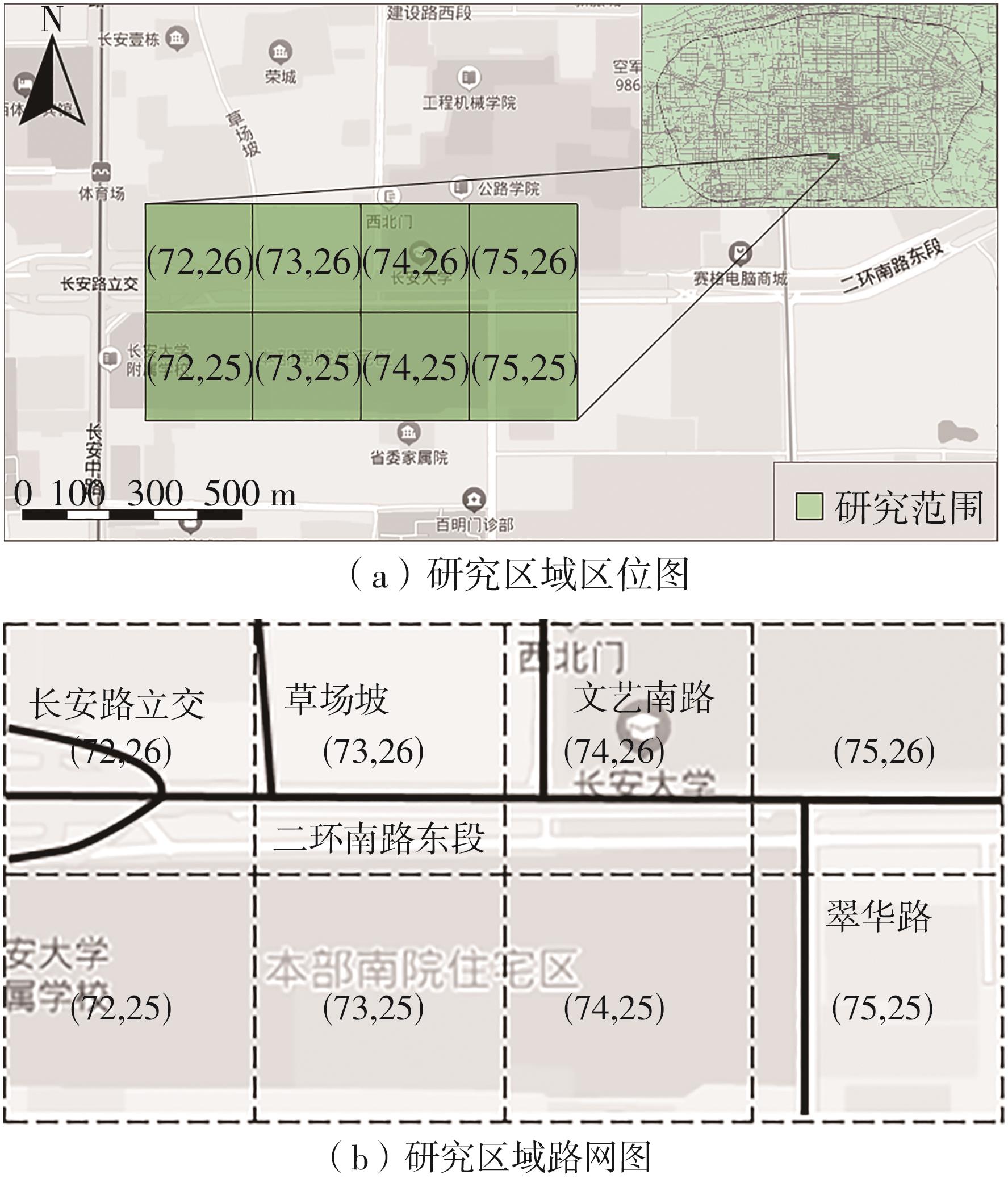| 1 |
AN S, YANG H Q, WANG J .Revealing recurrent urban congestion evolution patterns with taxi trajectories[J].Isprs International Journal of Geo-Information,2018,7(4):128-145.
|
| 2 |
贾若,戴昇宏,黄霓,等 .交通拥堵判别方法研究综述[J].华南理工大学学报(自然科学版),2021,49(4):124-139.
|
|
JIA Ruo, DAI Shenghong, HUANG Ni,et al .Literature review on traffic congestion identification methods[J].Journal of South China University of Technology (Natural Science Edition),2021,49(4):124-139.
|
| 3 |
王曦,祝付玲 .基于高斯混合分布的交通拥堵评价模型[J].公路交通科技,2011,28(2):127-132.
|
|
WANG Xi, ZHU Fuling. Evaluation model of traffic congestion based on Gaussian mixture distribution[J].Journal of Highway and Transportation Research and Development,2011,28(2):127-132.
|
| 4 |
王忻 .基于改进的隐马尔可夫模型交通拥堵识别研究[J].兰州交通大学学报,2018,37(5):23-28.
|
|
WANG Xin .Research on traffic congestion recognition based on improved Hidden Markov Model[J].Journal of Lanzhou Jiaotong University,2018,37(5):23-28.
|
| 5 |
付子圣,李秋萍,柳林,等 .利用GPS轨迹二次聚类方法进行道路拥堵精细化识别[J].武汉大学学报(信息科学版),2017,42(9):1264-1270.
|
|
FU Zisheng, LI Qiuping, LIU Ling,et al .Identification of urban network congested segments using GPS trajectories double-clustering method[J].Geomatics and Information Science of Wuhan University,2017,42(9):1264-1270.
|
| 6 |
郭雪婷,秦艳丽,雷震 .基于出租车GPS数据的城市道路拥堵判别[J].交通信息与安全,2013,31(5):140-144.
|
|
GUO Xueting, QIN Yanli, LEI Zhen .Urban road congestion discrimination based on taxi GPS data[J].Journal of Transport Information and Safety,2013,31(5):140-144.
|
| 7 |
CHAURASIA B K, MANJORO W S, DHAKAR M .Tra-ffic congestion identification and reduction[J].Wireless Personal Communications,2020,114(2):1267-1286.
|
| 8 |
李勇 .基于出租车GPS数据的城市交通拥堵识别和关联性分析[D].哈尔滨:哈尔滨工业大学,2016.
|
| 9 |
杨海强 .基于出租车GPS数据的城市常发性交通拥堵演变研究[D].哈尔滨:哈尔滨工业大学,2018.
|
| 10 |
杨海强,安实,王健 .基于GPS数据的城市常发性拥堵区域识别方法[J].科学技术与工程,2018,18(13):156-160.
|
|
YANG Haiqiang, AN Shi, WANG Jian .The method of identifying urban recurrent congestion area based on GPS data[J].Science Technology and Engineering,2018,18(13):156-160.
|
| 11 |
张俊锋,马昌喜,吴芳,等 .复杂城市交通网络拥堵传播的改进SIS模型[J].交通运输研究,2015,1(6):20-25.
|
|
ZHANG Junfeng, MA Changxi, WU Fang,et al .Improved SIS model of congestion propagation of complex urban traffic network[J].Journal of Transport Research,2015,1(6):20-25.
|
| 12 |
SHI Z B, ZHANG N, ZHU L .Understanding the propagation and control strategies of congestion in urban rail transit based on epidemiological dynamics model[J].Information,2019,10(8):258-273.
|
| 13 |
BELLOCCHI L, GEROLIMINIS N .Unraveling reaction-diffusion-like dynamics in urban congestion propagation:Insights from a large-scale road network[J].Scientific Reports,2020,10(1):4876-4886.
|
| 14 |
肖文锦,张琦 .基于灾害蔓延理论的拥堵传播建模与仿真[J].铁道科学与工程学报,2018,15(6):1593-1600.
|
|
XIAO Wenjin, ZHANG Qi .Modeling and simulation of congestion propagation based on disaster spreading dynamic model[J].Journal of Railway Science and Engineering,2018,15(6):1593-1600.
|
| 15 |
蒋阳升,刘纹滔,姚志洪 .基于元胞自动机的轨道交通突发客流拥堵消散演化机理研究[J].交通运输系统工程与信息,2020,20(5):121-127.
|
|
JIANG Yangsheng, LIU Wentao, YAO Zhihong .Evolution mechanism of congestion and dissipation of sudden passenger flow in urban rail transit based on cellular automaton[J].Journal of Transportation Systems Engineering and Information Technology,2020,20(5):121-127.
|
| 16 |
韦伟 .基于实测数据的道路交通状态特征及拥堵传播规律分析方法[D].北京:北京交通大学,2017.
|
| 17 |
欧吉顺 .异质性城市路网交通拥堵传播模式发现与可视化研究[D].南京:东南大学,2019.
|
| 18 |
王美红 .基于实测数据的天津市交通拥堵时空关联性分析[D].北京:北京交通大学,2019.
|
| 19 |
SAEEDMANESH M, GEROLIMINIS N. Dynamic clustering and propagation of congestion in heterogeneously congested urban traffic networks[J].Transportation Research Part B,2017,105:193-211.
|
| 20 |
LI C L, YUE W W, MAO G Q,et al .Congestion propagation based bottleneck identification in urban road networks[J].IEEE Transactions on Vehicular Technology,2020,69(5):4827-4841.
|
| 21 |
DI X L, XIAO Y, ZHU C,et al .Traffic congestion prediction by spatiotemporal propagation patterns[C]∥ Proceedings of the 20th IEEE International Conference on Mobile Data Management (MDM).Hong Kong:IEEE Computer SOC,2019:298-303.
|
| 22 |
NGUYEN H, LIU W, CHEN F .Discovering congestion propagation patterns in spatio-temporal traffic data[J].IEEE Transactions on Big Data,2017,3(2):169-180.
|
| 23 |
张敬磊,王晓原,马立云,等 .基于动态贝叶斯网络的交通流状态辨识方法[J].北京理工大学学报,2014,34(1):45-49.
|
|
ZHANG Jinglei, WANG Xiaoyuan, MA Liyun,et al .Research on traffic flow states identification method based on dynamic Bayesian networks[J].Transactions of Beijing Institute of Technology,2014,34(1):45-49.
|
| 24 |
洪安东 .基于时空立方体的交通拥堵点时空模式挖掘与分析[D].成都:西南交通大学,2017.
|
| 25 |
戴帅,刘金广,赵琳娜,等 .中国重点城市道路网结构画像报告[R].北京:公安部道路交通安全研究中心,2020.
|
| 26 |
唐璐瑶 .基于出租车GPS数据的城市交通拥堵识别及预测研究[D].西安:长安大学,2020.
|
| 27 |
城市道路交通运行评价指标体系: [S].
|
| 28 |
黄鑫 .以长椿街路口为例谈北京市区内重点路口早晚高峰勤务疏堵措施[J].汽车与安全,2015(11):90-92.
|
|
HUANG Xin .The morning and evening peak counseling measures of beijing key intersection taking changchunjie intersection as example[J].Journal of Auto & Safety,2015(11):90-92.
|
| 29 |
胡志文 .城市路网关键路段交通拥堵管理措施研究[D].重庆:重庆交通大学,2015.
|











